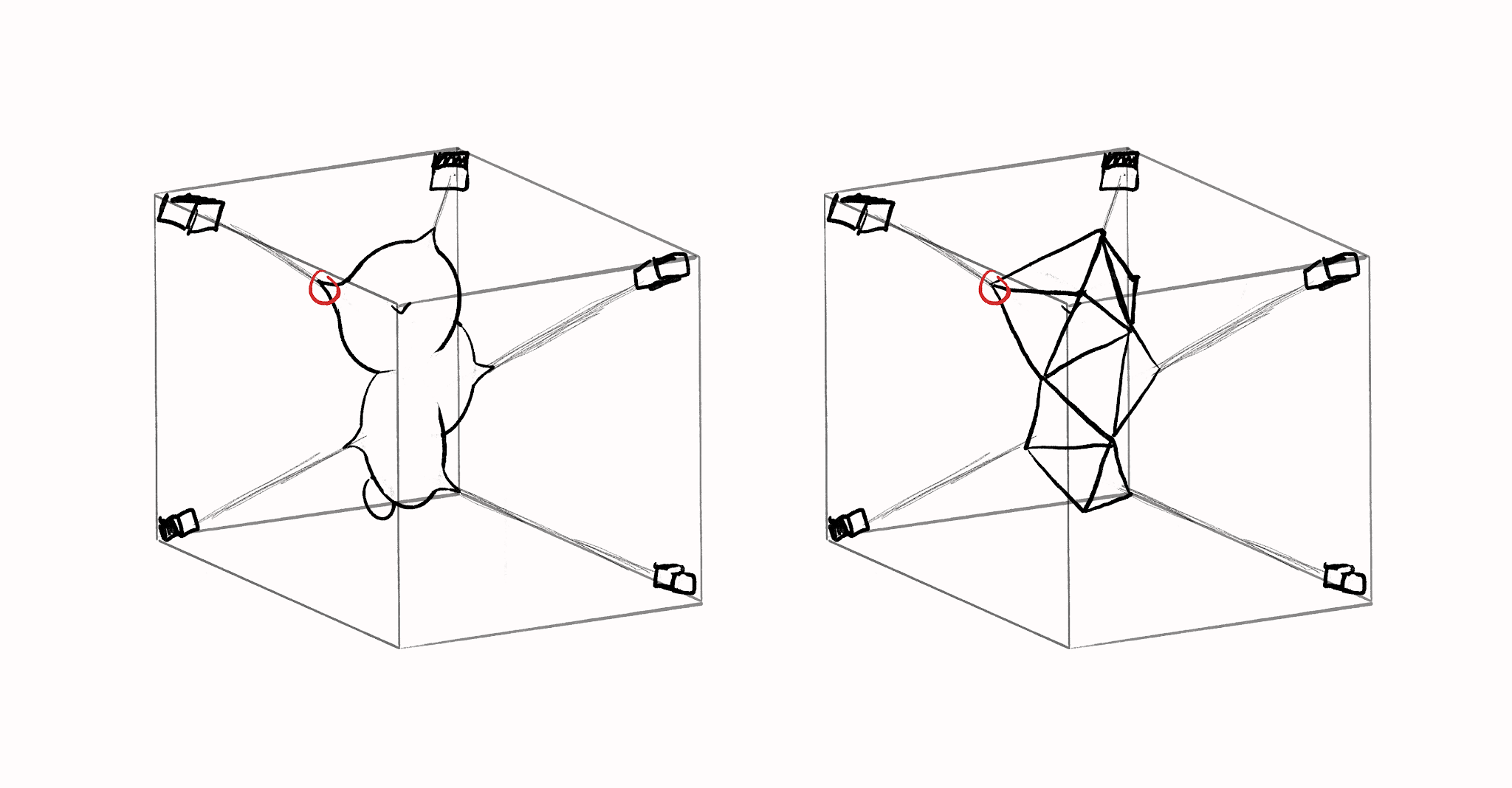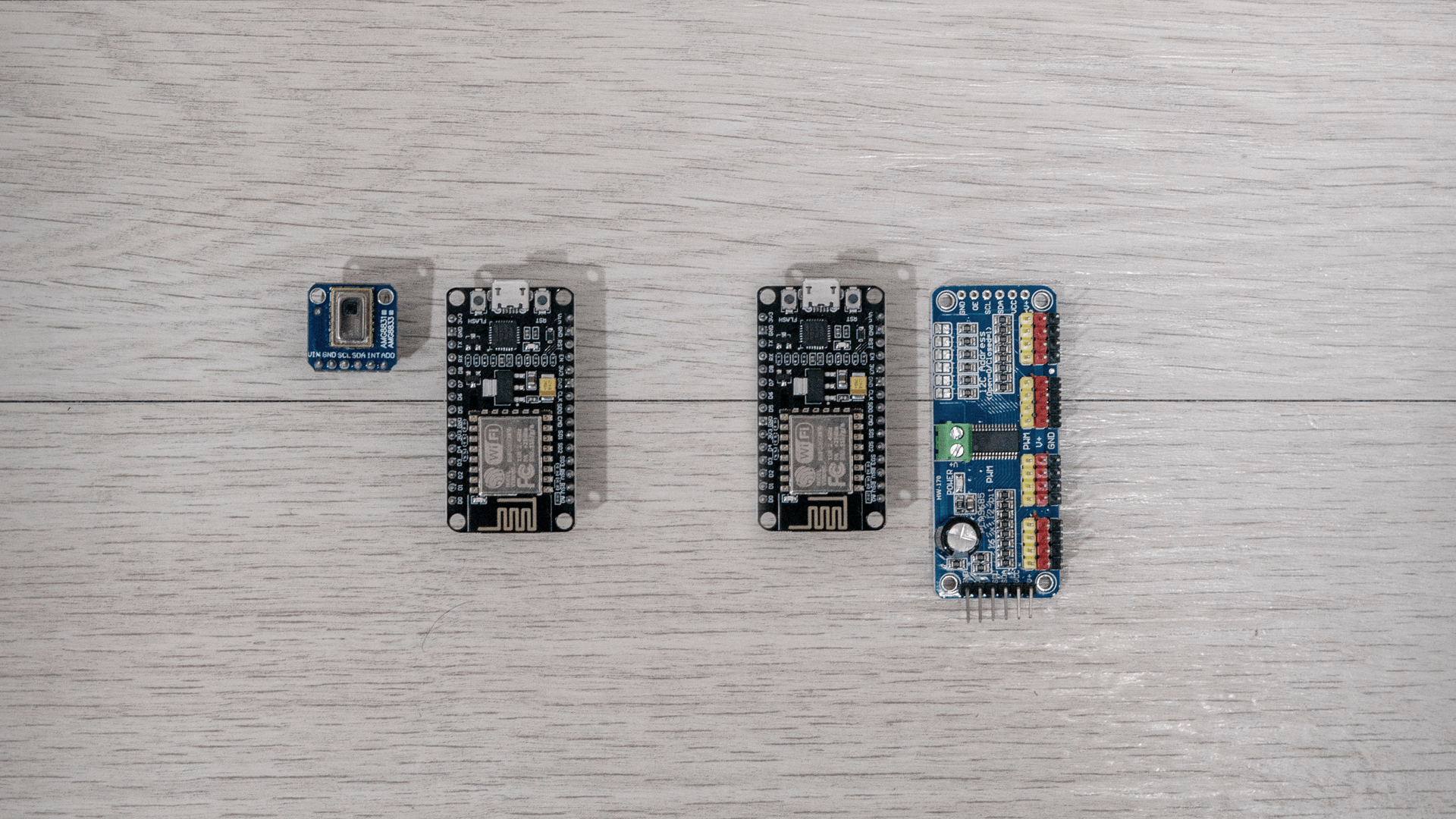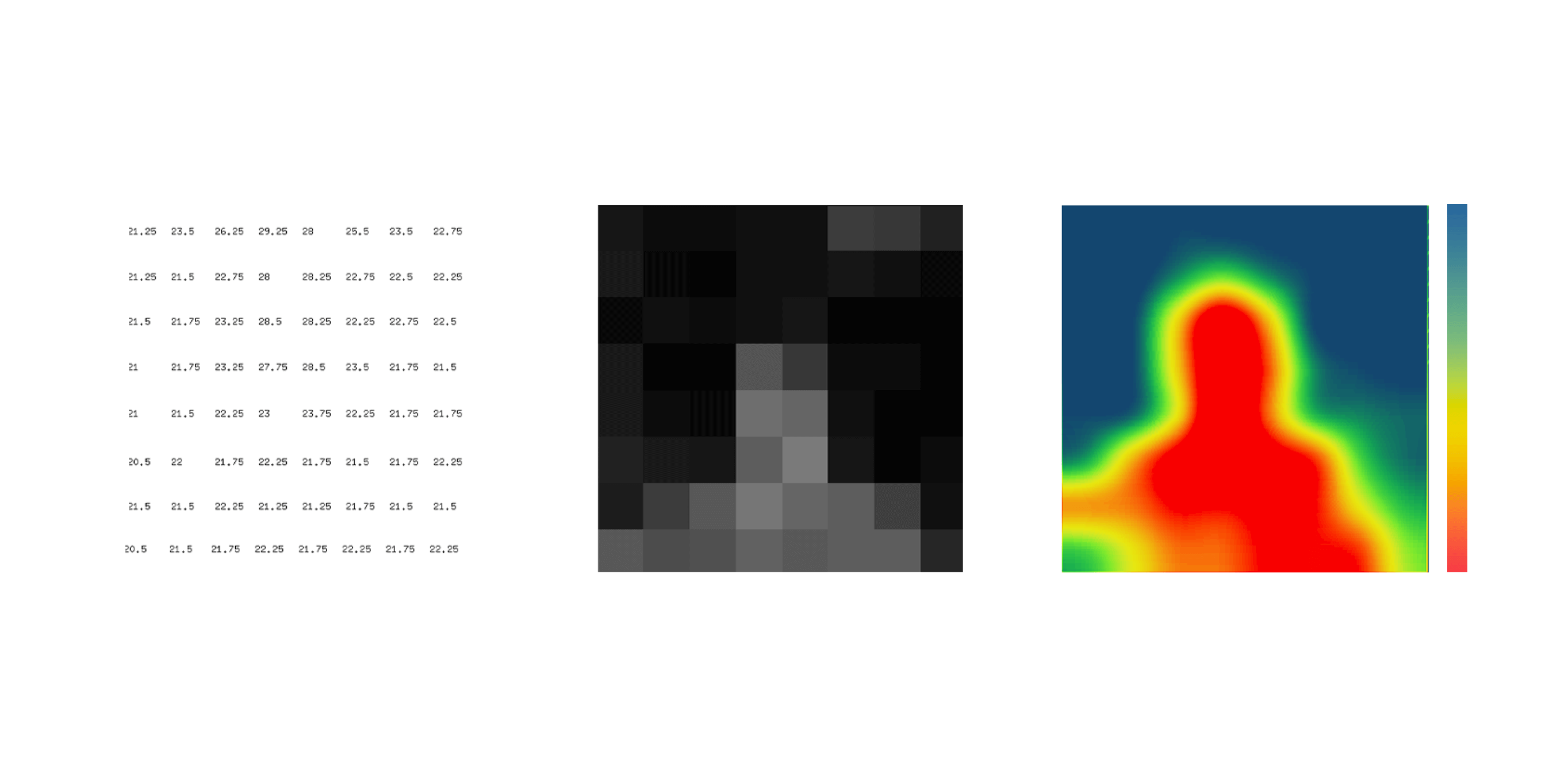

menu
Non - locality
More info: matsthesis.blogspot.com/
Non locality is the erasure of location and distance. The project is about creating an installation that allows your presence to be captured and transported beyond your physical reach. The installation consists of a pair of objects. Each object has the ability to capture the spectators position relative to the object. As a result, it can capture your movement and visualize your presence. This process is synchronized across the objects. This means that when you approach one, they will both react similarly.


Goal
The aim of this project is to explore how this concept can be applied to design for commercial spaces to create attractive in-store experiences.
The final project presents a low fidelity, low resolution form of presence. Once one of the objects move it indicates that someone is currently watching either in your location or elsewhere. With multiple objects synchronised to human proximity your presence can defy time and distance.
Scenario
How could a store be unified and connected with a store located thousands of miles away? Commercial spaces have become more and more focused on offering experiences. However, they all exist in a vacuum, isolated from each other.


Given a multinational company; a store in New York and a store in Seoul can be connected. It is a way to unify the shopping experience and erase distance which allows people to connect with each other across large distances.
When I enter a store in Seoul, my presence is extended and can be felt in a location somewhere else.
Research
To discover the best approach to this subject I performed a series of experiments where I explored different ways to accomplish the goal of this project.
To cover the most ground possible, each experiment used different techniques and explored different aspects of connection. At the end of each experiment I tried to deduce what worked and what didn’t. After conducting enough experiments I had an idea about which would be the most effective. At which point I chose one of the experiments and developed it into a fully working prototype.
Experiment 01
The first project explored the idea of networks. A network is an intricate and complex system of interconnected people or things. They open up a new world of information and communication, overcoming the limitations of physical distance and time. Networks are complex, agile and resilient, they are constantly on and constantly expanding. If one point in the network fails, the other points will overtake its spot. A single point in a network has little to no value on its own, but the network as a whole is “alive”. The sum is greater than its individual parts.

I wanted to have a centralized object that connects multiple spaces together. In each location your presence is captured and translated into distortion in the data network. Each location corresponds to a point being pulled. This is a take on how we're currently always connected through mobile data / internet. Never at one point in our daily lives are we ever truly disconnected from the world around us.
It is an interesting idea and the output looks great, but it was incredibly ambiguous and lacking in terms of clarity. E.g. how would each location see the centralized object etc.
Experiment 02
The second experiment was an experimental double channel video, Bilocation. This was a much clearer and more accessible experiment. Way easier for people to grasp the connection between the laser cutter head and the video. If anything it is a good tool to describe the concept of extending your presence.

Experiment 03
I wanted to explore a more personal aspect of connection. When thinking of how we feel others' presence it is more so about for example feeling their touch or the heat from their body. As such i thought an experiment that extends and transforms human heat could be interesting.
More info about the 3rd experiment can be found here: thinking of you.

Experiment 04
This experiment was a combination of experiment 02 and 03, using both human heat as well as position as input.
More info about the 4th experiment can be found here: thermal heat.

Experiment 05
The last experiment i performed, video stream merge, was about trying to create a connection through abstraction. By using live video streams and extracting common features / data, we could use these features to create an abstract representation of a merge between two or more locations.
For example in the experiment i performed i analysed traffic through traffic cameras around Seoul. Each car registered will be added to a network together with its color. As the project works in real time the data networks can tell us something about the amount of traffic as well as for example the frequency of public transport (judging by the amount of for example green, which is a common color for buses in Korea, but not for personal vehicles).

After conducting these experiments I thought that the experiment with the most potential and that would yield the most interesting result was the very first one. It just had to be redone to be more accessible and easier to undestand. However I thought that once I had a fully working prototype it would be much easier to fully see how well people would be able to understand the concept.
Fabrication
Based on the first experiment, the idea was to create a transformative object that could deform in multiple directions. The object would deform through presence either through attraction or repulsion, reaching out to or avoiding the spectator, acting like a living being. To support this, I wanted to cast a silicon “sack” suspended in water which would give the impression of an organism pushing out from the inside like a fetus. As networks are "alive", the object should also give this same impression.




However, due to problems with durability as well as a general lack of experience with casting I ultimately ended up with a more "flower" - like object of layered acrylic. This way I could make use of digital fabrication techniques that i was more familiar with. The final object consists of eight arms. Each arm has 20 layers with three spacers each as well as a guiding brass tube attached in the middle.



hardware and development
Each object has two ESP8266 boards, one connected to the motors at the top and one connected to a thermal camera to detect presence. This one also sends and recieves data from the other object which has a similar setup.




final output
Entire process can be found here: matsthesis.blogspot.com/
↩︎ previous project
next project